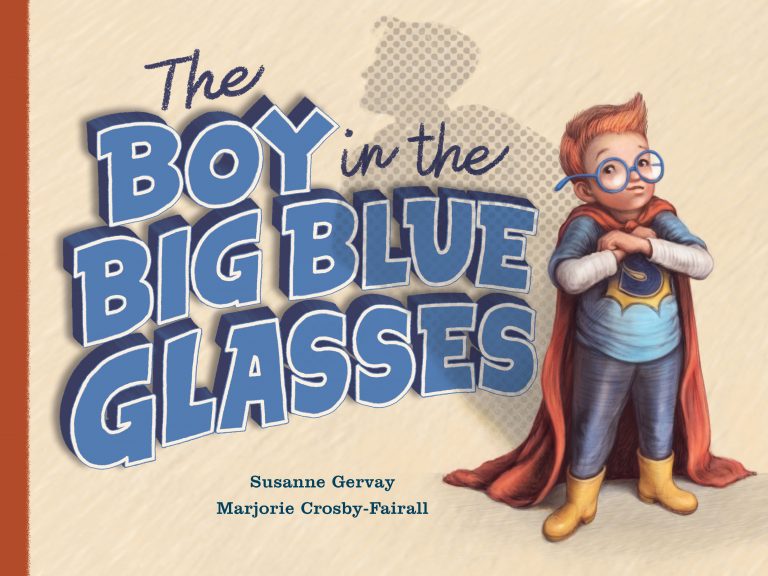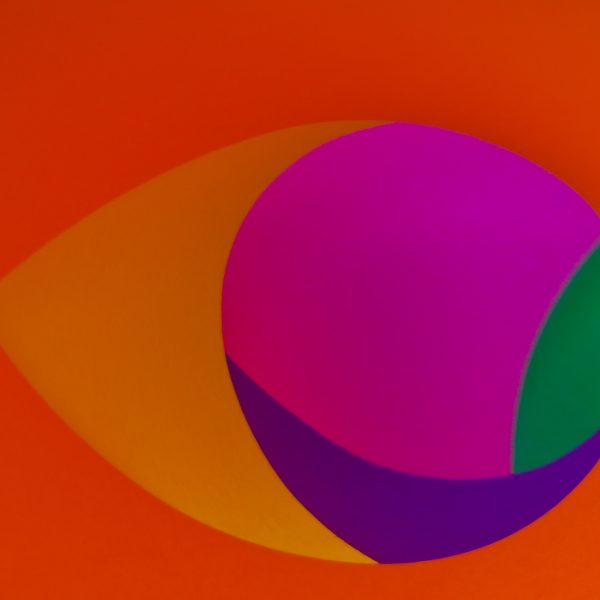Helping children to clearly see that being different isn’t bad – an author on a mission

Children’s author Susanne Gervay has a simple agenda that is complex in its execution – to create stories that not only entertain, but also enrich the lives of children and their families.
Tackling topics such as disability, multiculturalism, bullying, inclusion and peace in a way which engages and doesn’t ‘preach’ is always going to be a tall order, but one which Ms Gervay has met time and time again, being awarded an Order of Australia for her services to children’s literature.
One of Ms Gervay’s recent works, The Boy in the Big Blue Glasses tells the story of Sammy, a young imaginative boy who gets glasses for the first time. While his parents, teacher and family are all happy for Sammy, because life is no longer blurry, Sammy feels different with his glasses, and his self esteem plummets.
Revealing the importance of glasses as an essential part of a child managing vision issues, The Boy in the Big Blue Glasses helps children to understand the world through the blur of vision impairment, and opens broader discussion about the importance how eyes and vision must be cared for, and how those who have sight and visual impairments adapt to meet these challenges.
While the story is about Sammy getting glasses, it is also about the many forms ‘being different’ can take, including race, disability, learning challenges, and physical appearance. The Boy in the Big Blue Glasses raises awareness and discussion.
Written to help raise awareness not only about the impact that bullying can have at any age, and the impact of vision impairment and the need for early eye testing, the book also supports the World Health Organisation’s (WHO) VISION 2020 initiative, a global campaign which aims to eliminate avoidable blindness by the year 2020.
Launched on 18 February 1999 by WHO together with more than 20 international non-governmental organisations involved in eye care and the prevention and management of blindness, VISION 2020 is a partnership that provides guidance, technical and resource support to countries that have formally adopted its agenda.
The Boy in the Big Blue Glasses aligns closely with the VISION 2020 project, and Ms Gervay was looking forward to speaking at a number of festivals about her work, in support of raising vision awareness. With one in five children having an undetected vision issue, awareness is an important first step in supporting children to overcome these challenges.
“Children can get their eyes checked for free – something many people are not aware of,” she said.
Eyesight problems, Ms Gervay added, can often be treated if identified early, and intervention before the age of eight can prevent vision impairment from impacting children’s lives in the longer term.
The impact of failing to act, and of undiagnosed vision impairment can be drastic, with serious consequences to children’s self concept, as well as being a potential driver for delays and challenges in core life skills such as learning to read and write.
For other children, vision challenges may impact on their ability to play sport, recognise faces, or participate in educational activities.
“When children have these visual issues attended to,” Ms Gervay said. “It’s often the first time they have been able to see the world as everyone else does.”
Inspiration for the story came, as stories often do, from close to home, when Ms Gervay’s grandson didn’t want to wear his glasses, because no-one could see him – something which crushed her spirits as a grandmother.
“I’ve worn glasses since I was a child – it was embarrassing, difficult to manage, and made me feel different. As an adult, I wear them with pride, but this wasn’t always the case.”
“It’s insidious when your vision becomes compromised,” she continued.
“A child just accepts the world looks the same for everyone – a blur. It’s easy to get misjudged as clumsy, disruptive, uncooperative, a slow learner, uncoordinated at sport, when it’s just that a child’s vision is impaired. If they are lucky, their vision problems are identified, and they get glasses.
“But glasses are hard to manage. You lose them. Break them. Crack them. They can hurt the back of your ears, dig into the bridge on your nose. There are the eye tests, which take forever and the drops sting. Swimming without glasses means you can’t see someone waving at you from the shore.”
The Boy in the Big Blue Glasses is not only about vision – it’s also a celebration of play, and creativity. Sammy’s one ally, a friend called George, accepts Sammy, and always recognises him, regardless of his glasses. Together they go on imaginative adventures of discovery.
Sammy and George’s friendship, and the reaction of other children to Sammy’s glasses, offer a gentle way for early childhood education and care (ECEC) professionals to work through issues of exclusion, bullying and difference with children in their care.
For many children, Sammy’s story will be the first time they can ‘see’ what it is like to live with a visual impairment, thanks to the clever illustrations which show just how blurry life can be for Sammy when he leaves his glasses off to blend in better.
The Boy in the Big Blue Glasses has been endorsed by Vision Australia, who transcribed the story into Braille and audio formats, and Good Vision for Life, who endorsed the book as part of a campaign for vision testing of children and in support of the VISION 2020 project.
For more information, or to purchase a copy of the book, please see here. To learn more about recognising signs of visual impairment in young children, please see here.
Popular

Workforce
Quality
Research
When did it start to go wrong?
2025-12-18 08:00:46
by Fiona Alston

Quality
Practice
Research
Small ways to teach babies and toddlers body safety and consent in early learning
2025-12-15 08:00:40
by Fiona Alston

Quality
Research
Food safety in early learning centres: Protecting children through better practices
2025-12-15 07:45:24
by Contributed Content
















